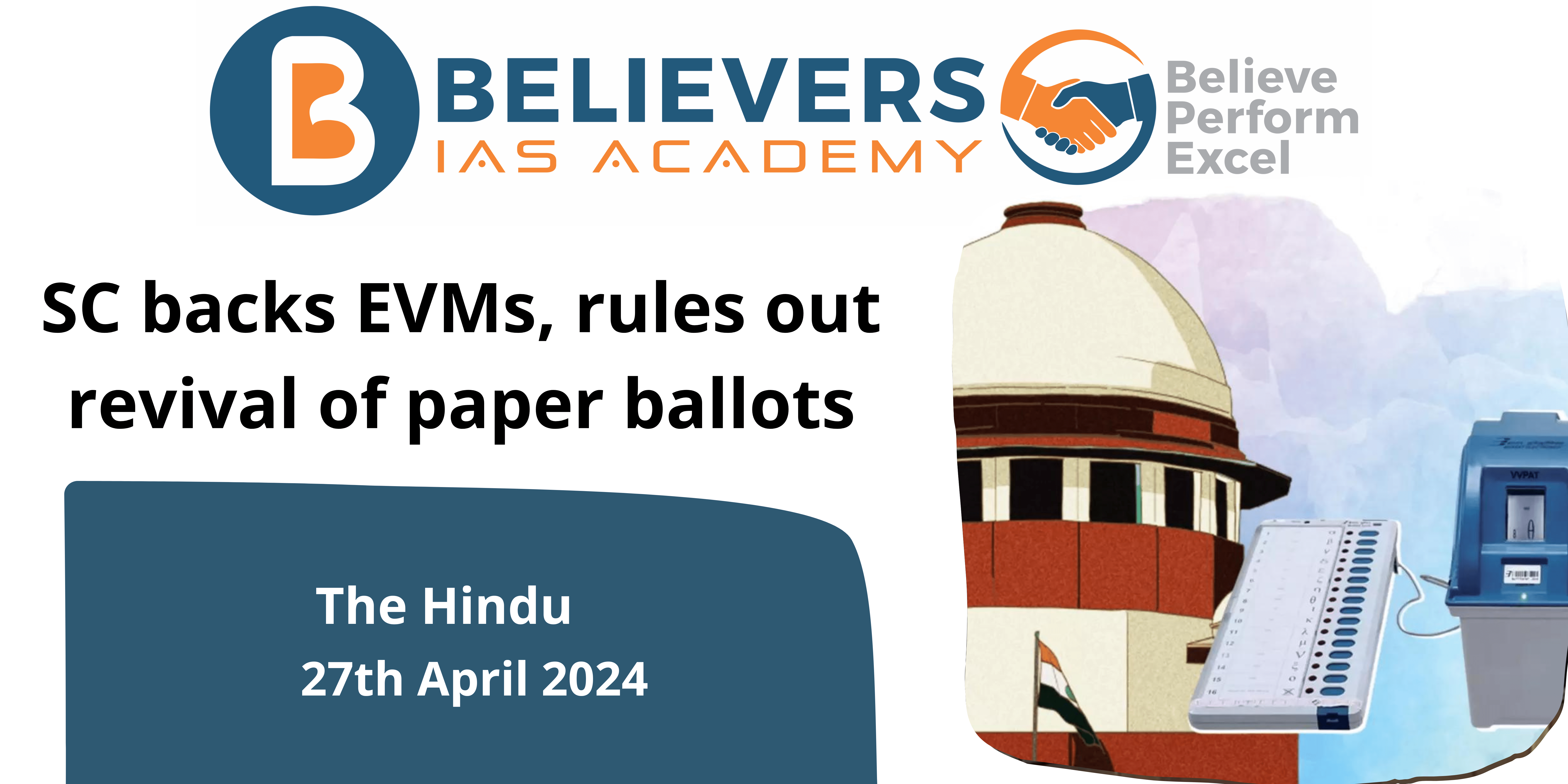SC backs EVMs, rules out revival of paper ballots
Context:
Supreme Court upholds EVM system, rejects plea for paper ballots, citing logistical challenges and advantages of EVMs.
Relevance:
GS-02 (Polity)
Facts for Prelims:
- EVMs were first used in the Paravur Assembly Constituency of Kerala in 1982.
- Essential Characteristics of EVMs:
- They operate without the need for electricity, functioning on a standard battery supplied by Bharat Electronics Limited/Electronics Corporation of India Limited.
- Utilizing a one-time programmable/masked chip, the microchip within the EVMs cannot be accessed for reading or rewriting.
- EVMs are self-contained devices, devoid of any operating system and can record a maximum of 2000 votes.
- Postal ballots: They are provided as a voting alternative for various groups, including service voters, absentee voters, voters on election duty, and those under preventive detention.
- Eligible individuals receive postal ballots from the Returning Officer either by mail or at a facilitation center after completing required forms.
Key Highlights:
- Court emphasizes the importance of avoiding unwarranted scepticism and distrust in electoral processes.
- Refusal to mandate physical access to VVPAT slips or 100% counting, balancing voter rights with practical considerations.
- Suggestions for improving electoral processes, including exploring electronic methods for VVPAT counting and unique bar codes for political parties.
- Direction to seal Symbol Loading Units after loading symbols into VVPATs and verification of burnt memory of EVM microcontrollers upon request.
- Candidates may request verification of EVMs’ microcontroller memory at their expense, with refunds if tampering is confirmed.
Voter-Verified Paper Audit Trail (VVPAT) System:
- The VVPAT system is an integral part of the Electronic Voting Machine (EVM), offering voters a visual confirmation of their vote by printing a paper slip displaying their choice.
- This slip briefly appears behind a glass window for verification before dropping into a secure compartment below.
- While voters cannot take the VVPAT slip home, it serves as a means of verifying votes in randomly selected polling booths, enhancing trust in the voting process.
Introduction Rationale:
- It was proposed in 2010 during consultations between the Election Commission of India (ECI) and political parties.
- It is aimed to augment transparency in EVM-based polling.
- Field trials conducted in various locations in 2011 paved the way for its approval by an ECI expert committee in 2013.
Legal Framework:
- Amendments to the Conduct of Elections Rules, 1961 in 2013 facilitated the attachment of a printer with a drop box to the EVM.
- The VVPAT made its debut in the Noksen Assembly constituency of Nagaland in 2013, followed by phased implementation leading to full adoption by June 2017.
Supreme Court’s Stance:
- In the Subramanian Swamy vs. Election Commission of India Case in 2013, the Supreme Court mandated the use of VVPATs for transparent elections, necessitating government funding for their integration.
- Subsequently, a 2019 petition urged the SC to ensure the counting of at least 50% of VVPAT slips, although the ECI cited challenges such as potential delays in result declaration and infrastructure constraints.




